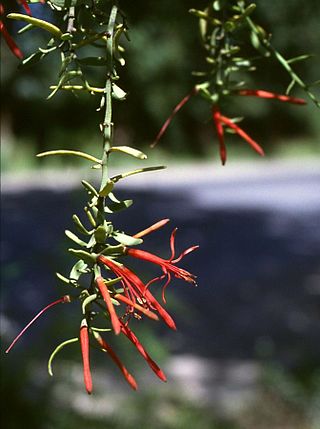
Loranthaceae, commonly known as the showy mistletoes, is a family of flowering plants. It consists of about 75 genera and 1,000 species of woody plants, many of them hemiparasites. The three terrestrial species are Nuytsia floribunda, Atkinsonia ligustrina, and Gaiadendron punctatum Loranthaceae are primarily xylem parasites, but their haustoria may sometimes tap the phloem, while Tristerix aphyllus is almost holoparasitic. For a more complete description of the Australian Loranthaceae, see Flora of Australia online., for the Malesian Loranthaceae see Flora of Malesia.
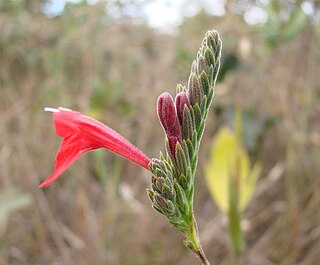
Justicia lanstyakii is a plant native to the Cerrado vegetation of Brazil, first described by Rizzini in 1946.

Tristerix is a genus of mistletoe in the family Loranthaceae, native to the Andes, ranging from Colombia and Ecuador to Chile and Argentina. They are woody perennials usually occurring as aerial parasites, are pollinated by hummingbirds and flowerpiercers, with seed-dispersal generally by birds but occasionally by mammals (Dromiciops). The genus is distinguished from other New World Loranthaceae by its simple, terminal, racemose inflorescences, together with its of 4- or 5-merous flowers, versatile anthers, and the presence of endosperm. Further differences include fused cotyledons and the absence of epicortical roots.
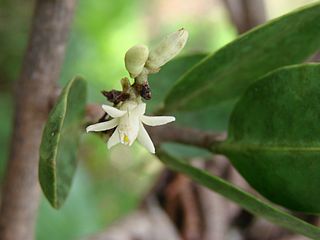
Phthirusa is a South American genus of parasitic shrubs in the family Loranthaceae.
Job Kuijt, is a Canadian botanist, with particular interest in Viscaceae, Loranthaceae and Eremolepidaceae. He is professor at the University of Victoria on Vancouver Island of British Columbia. He was awarded a Guggenheim fellowship in 1964. He was awarded the George Lawson Medal in 1971 by the Canadian Botanical Association.
Phoradendron nickrentianum is a hemiparasitic plant in the Santalaceae family, native to Peru. There are no synonyms.
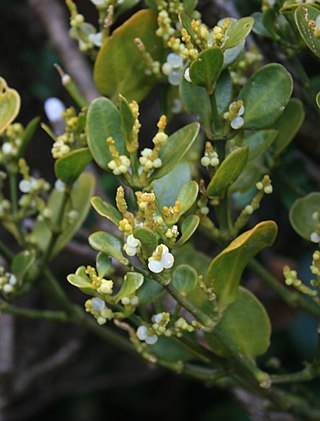
Dendrophthora, the tree destroyers, is a genus of flowering plants in the sandalwood family Santalaceae, native to tropical and subtropical Latin America and the Caribbean. They are hemiparasitic mistletoes that grow on a wide variety of host plants.
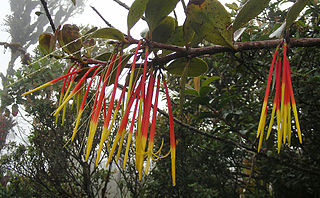
Aetanthus is a genus of flowering plants belonging to the family Loranthaceae.
Antidaphne is a genus of flowering plants belonging to the family Santalaceae.
Cladocolea is a genus of flowering plants belonging to the family Loranthaceae.
Cuenotia is a genus of flowering plants belonging to the family Acanthaceae.

Ligaria is a genus of flowering plants belonging to the family Loranthaceae.
Peristethium is a genus of flowering plants belonging to the family Loranthaceae.
Liberatia is a genus of flowering plants belonging to the family Acanthaceae.
Maracanthus is a genus of flowering plants belonging to the family Loranthaceae.
Morsacanthus is a monotypic genus of flowering plants belonging to the family Acanthaceae. The only species is Morsacanthus nemoralisRizzini.
Pusillanthus is a genus of flowering plants belonging to the family Loranthaceae.

Passovia is a genus of flowering plants belonging to the family Loranthaceae.
Oryctina is a genus of flowering plants belonging to the family Loranthaceae.
Psittacanthus gigas is a mistletoe native to Colombia. It was discovered in 1984 by Alwyn Gentry. It is most noteworthy for producing the largest leaves of any dicot shrub, with a blade or lamina up to 3.9 feet (120 cm) in length and 12 inches (30 cm) wide.





